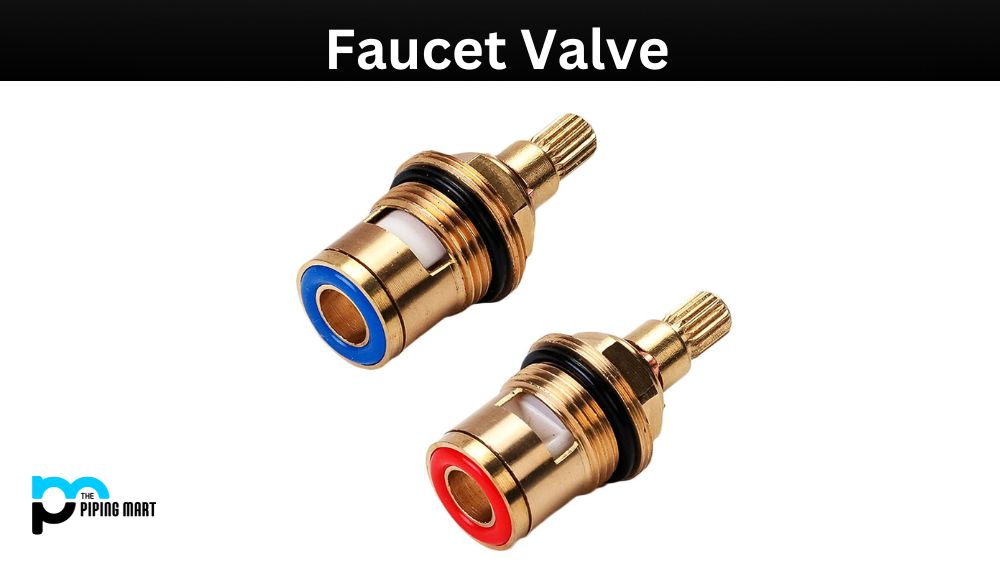A faucet valve is one of the most important parts of a plumbing system. It controls the flow and temperature of water in your home. Faucet valves come in different types, materials, and designs. Understanding faucet valves’ properties, uses, and applications can help you make informed decisions when installing, repairing, or replacing them. This blog post will explore everything you need about faucet valves.
What is Faucet Valve?
A faucet valve is a mechanical device that regulates the flow of water in a pipe or plumbing fixture. It’s responsible for controlling the water pressure and shutting off water when needed, as well as diverting it to different outlets. It is typically located underneath the sink or bathtub and requires human intervention to operate correctly.
Faucet Valves Properties:
Faucet valves are made of different materials such as brass, chrome-plated brass, stainless steel, plastic, and ceramic. The material used determines the valve’s durability, corrosion resistance, and cost. For instance, brass and stainless steel valves are more durable and corrosion-resistant than plastic and ceramic valves. However, they are often more expensive. Another property of faucet valves is the mechanism used to control water flow. There are three faucet valve mechanisms: compression, ball, and ceramic disk. Compression valves use a rubber washer to control water flow and are common in older faucet designs. Ball valves have a rotating ball that controls water flow and temperature. Ceramic disk valves use two ceramic disks to control water flow and temperature. They are the most durable and efficient type of valve.
Faucet Valves Uses:
Faucet valves are used in different plumbing fixtures such as sinks, bathtubs, showers, and toilets. They are responsible for controlling the water flow and temperature in these fixtures. For example, a sink faucet valve controls the amount of water that comes out of the tap and the water temperature. A shower faucet valve controls the flow of water to the showerhead and the temperature of the water. Faucet valves are also used in commercial plumbing applications such as hotels, restaurants, and hospitals. In these settings, faucet valves must meet specific requirements such as durability, efficiency, and safety.
Faucet Valves Applications:
Faucet valves are crucial components of residential and commercial plumbing systems. They are used to control the flow and temperature of water in kitchens, bathrooms, laundry rooms, and other places where water is used. In addition to controlling water flow, faucet valves also play a role in conserving water. For example, newer faucet designs often include low-flow aerators and automatic shut-offs to reduce water waste.
How to Use Faucet Valves:
Using faucet valves involves understanding how to turn them on and off, adjust the flow and temperature of the water, and maintain them. The instructions depend on the type of faucet valve and the plumbing fixture. Turning the valve clockwise shuts off the water, and turning it counterclockwise opens the valve. Adjusting the flow and temperature requires understanding the specific mechanism of the valve. Maintaining faucet valves involves regular cleaning, lubrication, and replacing worn-out parts. For example, if you notice a leaky faucet, it may be due to a worn-out washer that needs replacement. Regular inspection of faucet valves can help detect problems early before they become more severe.
Conclusion:
Faucet valves are essential components of plumbing systems in residential and commercial settings. Understanding their properties, uses, applications, and how to use them can help you make informed decisions when installing, repairing, or replacing them. As technology evolves, newer faucet designs offer more efficient and water-saving features. By staying informed about faucet valve technology, you can ensure that your plumbing system remains reliable, efficient, and safe.
Rachana is a dedicated and ambitious young woman who has made a name for herself in the metal industry. From her earliest days in the industry, Rachana showed a natural talent for problem-solving and a keen eye for detail. In her free time, She enjoys reading up on the latest advancements in the industry, as well as exploring new ways to innovate and improve upon existing processes.




